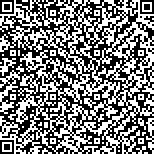赵凯怡,赖珊珊,卢巧亚,等.婴儿神经学检查联合头颅MRI检测对脑瘫高危儿不良神经发育的预测价值[J].中华物理医学与康复杂志,2024,46(4):342-346
扫码阅读全文

|
| 婴儿神经学检查联合头颅MRI检测对脑瘫高危儿不良神经发育的预测价值 |
|
| |
| DOI:10.3760/cma.j.issn.0254-1424.2024.04.011 |
| 中文关键词: 脑性瘫痪 高危儿 神经发育 Hammersmith婴儿神经学检查 磁共振成像 预测价值 |
| 英文关键词: Cerebral Palsy Infants Neurodevelopment Hammersmith Infant Neurological Examination Magnetic Resonance Imaging |
| 基金项目:温州市科技局科研项目(Y20211128) |
|
| 摘要点击次数: 3132 |
| 全文下载次数: 3019 |
| 中文摘要: |
| 目的 探讨Hammersmith婴儿神经学检查(HINE)联合头颅MRI检测对脑瘫高危儿12月龄诊断脑瘫和运动发育迟缓的预测价值。 方法 选取矫正2~6月龄行HINE和头颅MRI检查的脑瘫高危儿45例,随访至矫正12月龄,最终完成随访共36例,采用Peabody运动发育量表(PDMS)对其运动发育程度进行评估,分为正常组(21例)、迟缓组(8例)和脑瘫组(7例)。根据头颅MRI检测Woodward白质评分法评价患儿的脑白质异常程度,计算2~6月龄HINE得分、12月龄HINE得分与头颅MRI脑白质异常程度之间的Spearman系数,计算2~6月龄HINE得分与脑瘫严重程度和迟缓严重程度之间的Spearman系数,计算单独使用HINE、头颅MRI及其联合使用与婴儿发育结局之间的Spearman系数。采用受试者工作特征曲线(ROC)描绘单独使用HINE、头颅MRI、HINE或头颅MRI异常、HINE且头颅MRI异常四个指标预测矫正12月龄时诊断脑瘫和迟缓的曲线下面积(AUC),并评价其预测价值。 结果 ①36例高危儿中,12例HINE得分预测为脑瘫;头颅MRI脑白质评分,中重度异常9例,轻度异常9例,无异常18例;随访至矫正12月龄,发育正常21例,运动发育迟缓8例(7例差,1例非常差),脑瘫7例,其中脑瘫粗大运动功能分级系统(GMFCS)分级Ⅲ级2例,Ⅳ级4例,Ⅴ级1例。②2~6月HINE得分与脑瘫严重程度分级(r=-0.867,P=0.012)、迟缓严重程度(r=-0.598,P=0.000)之间均具有相关性,HINE得分越低其预后越差。③矫正2~6月龄HINE得分和12月龄HINE得分与头颅MRI的脑白质异常程度之间均具有相关性(r值分别为-0.790和-0.683,P值均为0.000)。④HINE、头颅MRI、HINE或头颅MRI异常、HINE且头颅MRI异常与脑瘫和迟缓结局均具有相关性(r值分别为0.644、0.772、0.572、0.839和0.781、0.783、0.714、0.944,P值均为0.000);预测脑瘫和迟缓结局诊断的敏感性分别为100.0%、100.0%、100.0%、100.0%和93.3%、93.3%、100.0%、93.3%,特异性分别为82.8%、93.1%、79.3%、96.6%和85.7%、81.0%、71.4%、100.0%,AUC值分别为0.914、0.966、0.897、0.983和0.895、0.871、0.857、0.967(P值均为0.000)。 结论 HINE联合头颅MRI检测对脑瘫高危儿12月龄发育结局预测价值更高。 |
| 英文摘要: |
| Objective To explore the predictive value of the Hammersmith infant neurological examination (HINE) combined with magnetic resonance imaging (MRI) of the head in forecasting motor development delay among children at high risk of cerebral palsy (CP). Methods HINE and cranial MRI were used to identify 36 infants 2 to 6 months old at high risk of CP. They were followed up until 1 year old and evaluated using the Peabody Developmental Motor Scale. According to the results, they were divided into a normal group (n=21), a delayed group (n=8) and a CP group (n=7). The degree of white matter abnormality (WMA) was evaluated using Woodward white matter scoring. Spearman correlation coefficients were computed relating the HINE, MRI and WMA results with the observed severity of CP and motor retardation. The utility of the measures for predicting CP or developmental delay at 12 months of age was quantified in terms of their sensitivity and specificity and the area under the receiver operating characteristics curves. Results The HINE scores predicted 12 cases of CP. Nine of them displayed moderate to severe cerebral white matter abnormalities on cranial MRI. Another 9 showed mild abnormalities and 18 appeared normal. At 12 months of age, 21 were normal, 8 had delayed development (1 case was very poor and the other 7 were poor), and the other 7 had CP. The HINE scores at 2 to 6 months correlated significantly with the severity of CP (r=-0.87) and motor retardation (r=-0.60). A lower HINE score was a useful predictor of a poorer prognosis. Abnormal MRI was also significantly correlated with CP and motor retardation (r=0.77). The sensitivity of both measures in predicting CP and motor retardation was >90% with specificity of 80% or more. Conclusion The predictive power of the HINE can be improved by combining it with MRI. |
|
查看全文
查看/发表评论 下载PDF阅读器 |
| 关闭 |